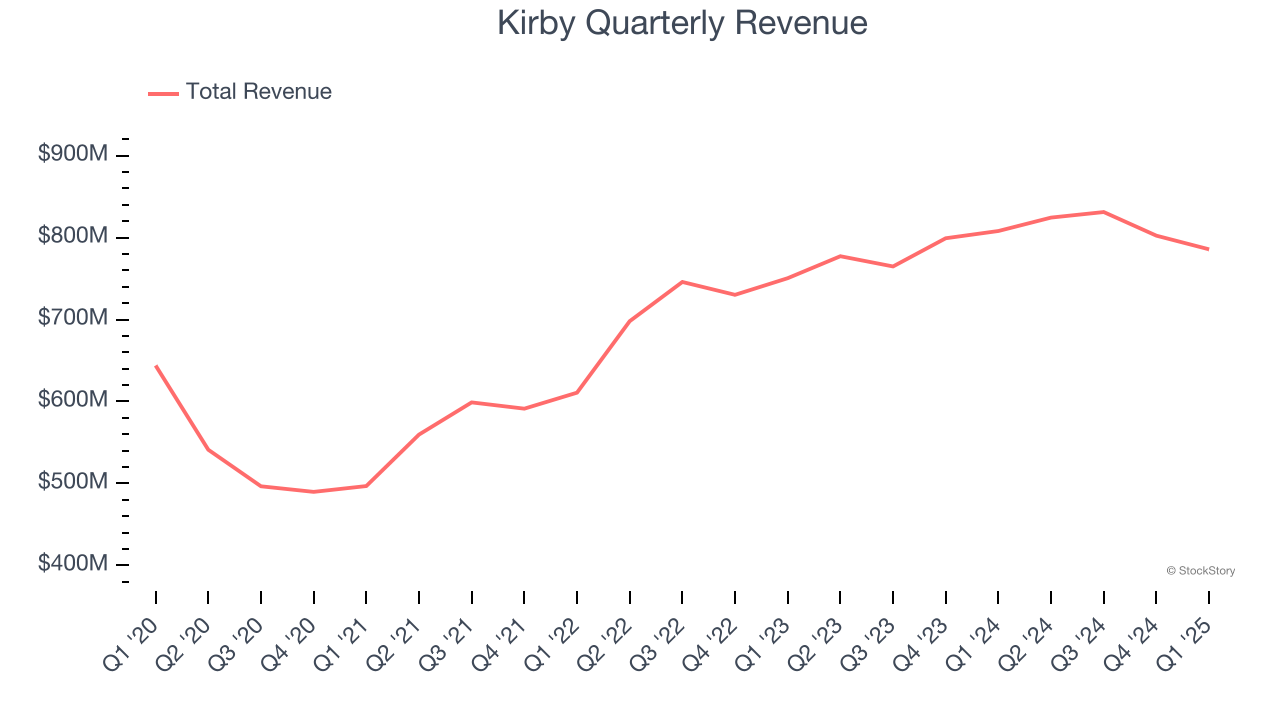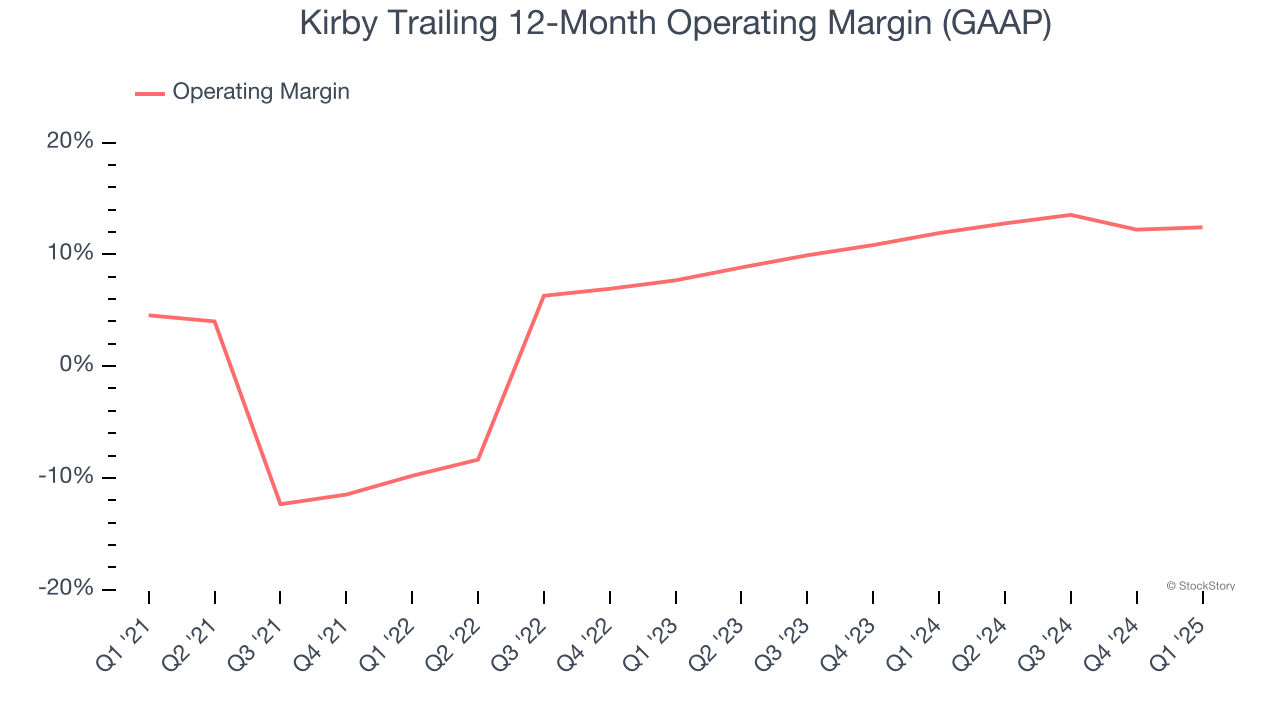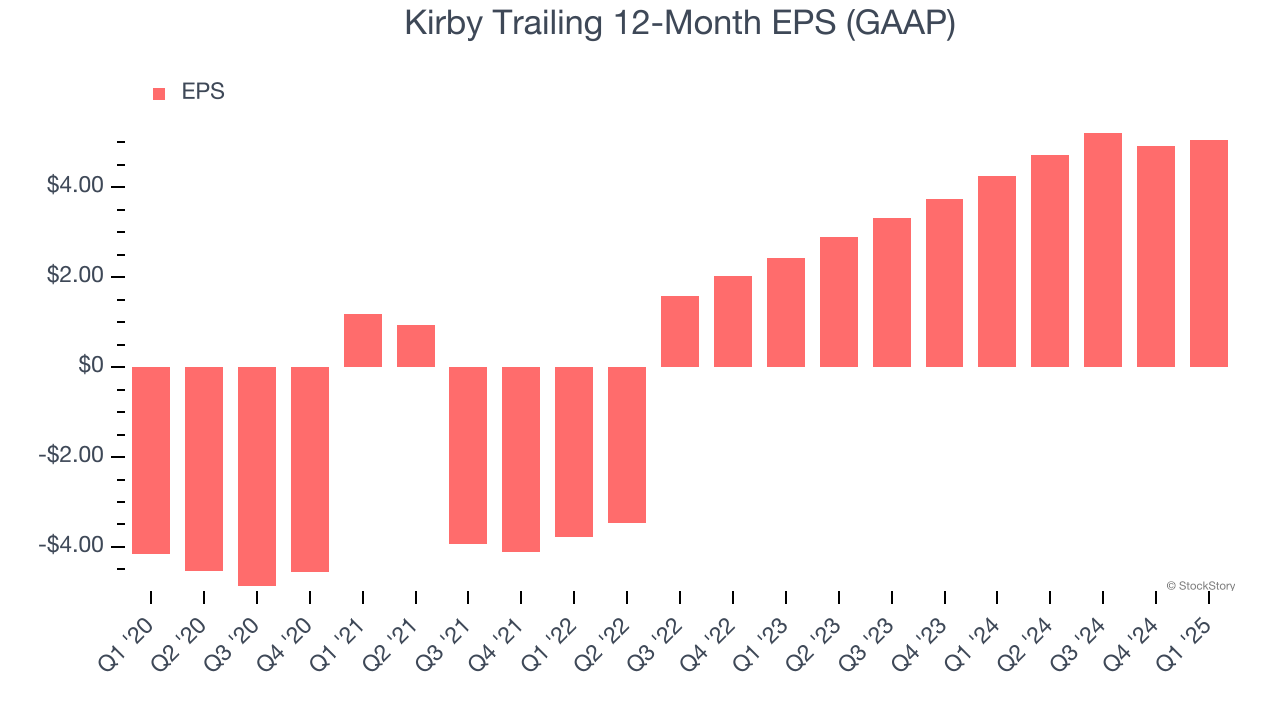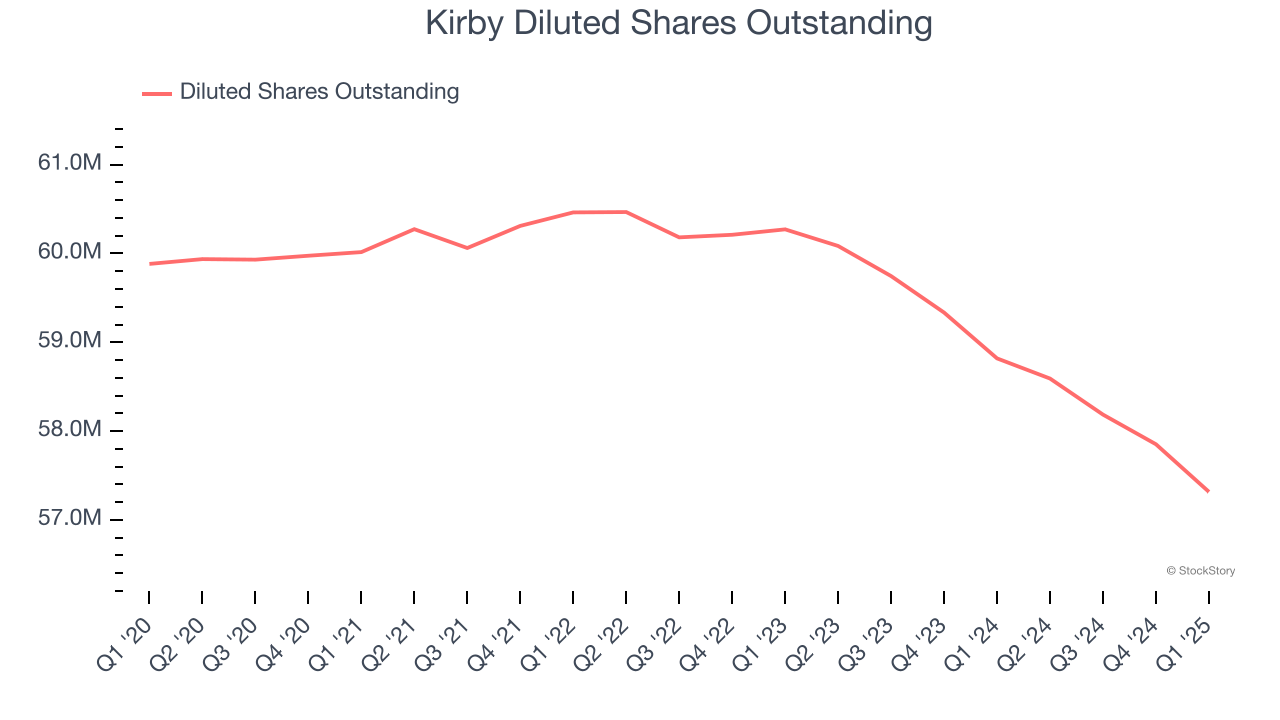
Marine transportation service company Kirby (NYSE: KEX) fell short of the market’s revenue expectations in Q1 CY2025, with sales falling 2.8% year on year to $785.7 million. Its GAAP profit of $1.33 per share was 4.5% above analysts’ consensus estimates.
Is now the time to buy Kirby? Find out by accessing our full research report, it’s free.
Kirby (KEX) Q1 CY2025 Highlights:
- Revenue: $785.7 million vs analyst estimates of $822 million (2.8% year-on-year decline, 4.4% miss)
- EPS (GAAP): $1.33 vs analyst estimates of $1.27 (4.5% beat)
- Adjusted EBITDA: $174.3 million vs analyst estimates of $167.4 million (22.2% margin, 4.1% beat)
- Operating Margin: 13.4%, in line with the same quarter last year
- Free Cash Flow was -$42.2 million, down from $42.3 million in the same quarter last year
- Market Capitalization: $5.48 billion
David Grzebinski, Kirby’s Chief Executive Officer, commented, “Our first quarter results reflected improved market fundamentals in marine transportation and continued strong demand for power generation in distribution and services. These positive trends were partially offset by weather and navigational challenges in marine and continued supply delays in distribution and services. Overall, our combined businesses performed well during the quarter.
Company Overview
Transporting goods along all U.S. coasts, Kirby (NYSE: KEX) provides inland and coastal marine transportation services.
Sales Growth
Examining a company’s long-term performance can provide clues about its quality. Any business can put up a good quarter or two, but the best consistently grow over the long haul. Over the last five years, Kirby grew its sales at a sluggish 3.4% compounded annual growth rate. This wasn’t a great result compared to the rest of the industrials sector, but there are still things to like about Kirby.

We at StockStory place the most emphasis on long-term growth, but within industrials, a half-decade historical view may miss cycles, industry trends, or a company capitalizing on catalysts such as a new contract win or a successful product line. Kirby’s annualized revenue growth of 5.3% over the last two years is above its five-year trend, but we were still disappointed by the results. We also note many other Marine Transportation businesses have faced declining sales because of cyclical headwinds. While Kirby grew slower than we’d like, it did do better than its peers. 
Kirby also breaks out the revenue for its most important segments, Marine Transportation and Distribution and Services, which are 60.6% and 39.4% of revenue. Over the last two years, Kirby’s Marine Transportation revenue (petroleum products and chemicals) averaged 7.1% year-on-year growth while its Distribution and Services revenue (aftermarket parts and equipment) averaged 3.5% growth.
This quarter, Kirby missed Wall Street’s estimates and reported a rather uninspiring 2.8% year-on-year revenue decline, generating $785.7 million of revenue.
Looking ahead, sell-side analysts expect revenue to grow 7.4% over the next 12 months. Although this projection indicates its newer products and services will catalyze better top-line performance, it is still below the sector average. At least the company is tracking well in other measures of financial health.
Unless you’ve been living under a rock, it should be obvious by now that generative AI is going to have a huge impact on how large corporations do business. While Nvidia and AMD are trading close to all-time highs, we prefer a lesser-known (but still profitable) stock benefiting from the rise of AI. Click here to access our free report one of our favorites growth stories.
Operating Margin
Kirby was profitable over the last five years but held back by its large cost base. Its average operating margin of 6.3% was weak for an industrials business. This result isn’t too surprising given its low gross margin as a starting point.
On the plus side, Kirby’s operating margin rose by 7.9 percentage points over the last five years, as its sales growth gave it operating leverage.

This quarter, Kirby generated an operating profit margin of 13.4%, in line with the same quarter last year. This indicates the company’s cost structure has recently been stable.
Earnings Per Share
We track the long-term change in earnings per share (EPS) for the same reason as long-term revenue growth. Compared to revenue, however, EPS highlights whether a company’s growth is profitable.
Kirby’s full-year EPS flipped from negative to positive over the last five years. This is encouraging and shows it’s at a critical moment in its life.

Like with revenue, we analyze EPS over a shorter period to see if we are missing a change in the business.
Kirby’s EPS grew at an astounding 44.6% compounded annual growth rate over the last two years, higher than its 5.3% annualized revenue growth. This tells us the company became more profitable on a per-share basis as it expanded.
We can take a deeper look into Kirby’s earnings to better understand the drivers of its performance. While we mentioned earlier that Kirby’s operating margin was flat this quarter, a two-year view shows its margin has expanded by 5.2 percentage pointswhile its share count has shrunk 4.9%. Improving profitability and share buybacks are positive signs for shareholders as they juice EPS growth relative to revenue growth. 
In Q1, Kirby reported EPS at $1.33, up from $1.19 in the same quarter last year. This print beat analysts’ estimates by 4.5%. Over the next 12 months, Wall Street expects Kirby’s full-year EPS of $5.05 to grow 34.5%.
Key Takeaways from Kirby’s Q1 Results
We enjoyed seeing Kirby beat analysts’ EBITDA and EPS expectations this quarter. On the other hand, its Marine Transportation revenue missed and its total revenue fell short of Wall Street’s estimates. Overall, this quarter could have been better. The stock traded down 3.7% to $92.71 immediately following the results.
Big picture, is Kirby a buy here and now? When making that decision, it’s important to consider its valuation, business qualities, as well as what has happened in the latest quarter. We cover that in our actionable full research report which you can read here, it’s free.







